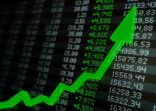The S&P 500 ended the year down 4.38%, the first negative performance for the index since 2008 when it fell 37%, according to FE data.
Only nine funds in Hong Kong and Singapore in the US equities space were positive in 2018. T Rowe Price had two of them, though Morgan Stanley Investment Management had the top performer.
The five best performers in 2018

Source: FE. In US dollars. Funds available for sale in Hong Kong and Singapore.
The common thread running through the best performers was technology, media and telecom (TMT) as the largest sector allocation. Most of the best funds were large cap-focused and had Amazon as the top holding.
Turning to the worst performers, the only generalisation is that they tended to have high, if not the highest, exposure to the financial sector.
The five worst performers in 2018

Sticking with US equities?
Various risks are on the horizon: rising interest rates, corporate debt, and the US-China trade conflict among them. But in 2019, financial institutions don’t seem to be pulling out of US equities.
Blackrock, for example, maintains an overweight on US equities, though the focus is on quality – “companies with strong balance sheets as the 2019 macro and earnings outlooks become more uncertain”, according to a report from the Blackrock Investment Institute.
Healthcare is the firm’s favoured sector, and within that, pharmaceuticals, managed care and medical technology.
Standard Chartered remains positive on global equity markets in 2019. But equities are reduced “to a ‘core holding’ from ‘preferred’ due to expected increasing variability in return”.
The bank’s top preference is US equities.
At UBS, the house view says that value stocks are the best positioning for the start of 2019. Price-to-earnings multiples for US value relative to growth stocks are near a post–2002 low, according to the bank’s global outlook report.
“Sector considerations also play a key role in our thinking,” UBS said. “We overweight energy and financials, which make up one-third of the Russell 1000 Value Index, whose earnings growth looks poised to exceed historical norms relative to the Russell 1000 Growth Index.”
UBS’ base case for US equities is +0% – +5% “due to solid economic activity supported by consumer and business confidence and capital access”.
Considerable risks remain. The US-China trade dispute could cause a significant slowdown in China and other countries could start to be impacted due to a disrupted supply chain, the bank said.
Another downside scenario is a spike in US inflation, forcing the Federal Reserve to raise interest rates aggressively. According to UBS, it could lead to “a flat or inverted US Treasury yield curve by mid-2019, and an equity market sell-off”. Should such a scenario unfold, US equity markets could plunge 10%–15% and a recession would likely begin in 2020.
The 10-year view of the S&P 500 and US equity category


















